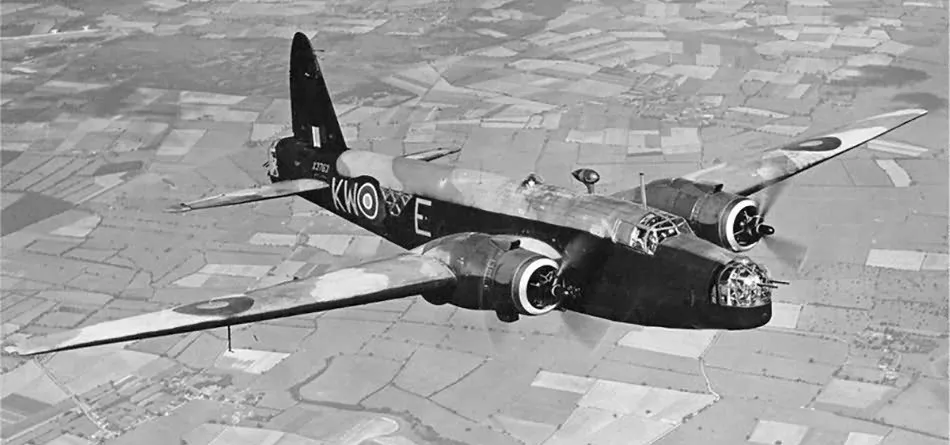Brennan, Harold J (Flying Officer)
Evader 1944-April-21


Birth Date: 1923-March-23
Born: Lindsay, Ontario
Parents:
Spouse:
Home: Lindsay, Ontario
Enlistment:
Enlistment Date: unkown date
Service
RCAF
Unit
28 OTU- Operational Training Unit (RAF)
Base
RAF Wymeswold
Rank
Flying Officer
Position
Pilot
Service Numbers
J/23877
Home
Crew or Other Personnel
Wellington LN896
Mission
Wellington B. Mk. X LN896
Operational 1944-April-20 to 1944-April-21
28 (OT) OTU (RAF) RAF Wymeswold
28 Operational Training Unit, RAF Wymeswold. The crew of Wellington BX aircraft LN 896 FU was engaged in dropping leaflets (Nickeling exercise) over Northern France in preparation for the D-Day landings, their first operational flight. On the return leg they ran out of fuel, fooled by German radio messages to continue flying. They eventually abandoned the aircraft near Mael-Pestivien, France, and the Wellington crashed between Kebars and Kerlosquer, 13 k m SW of Guingamp, France
Sergeant J Kempson (RAFVR) was severely injured when he fractured his skull on a rock during his parachute jump landing and died in hospital 1944-04-25
Sergeant EJ Trottier (RCAF), Flying Officer HJ Brennan (RCAF), Pilot Officer AJ Houston (RCAF), Sergeant RJ Dickson (RCAF) and Sergeant A Elder (RCAF) all survived and evaded capture with the aid of French locals and Resistance groups, even surviving a German attack against the Resistance in the town of St Fiacre. They stayed together as a group and were repatriated to the UK by boat (MGB 503) 1944-07-12/13
Wellington serial: LN896

Vickers Wellington B. Mk. III (Serial No. X3763), coded KW-E, No. 425 'Alouette' (B) Squadron, RCAF, late summer of 1942
The Vickers Wellington was a British twin-engined, long-range medium bomber. It was designed during the mid-1930s at Brooklands in Weybridge, Surrey. Led by Vickers-Armstrongs' chief designer Rex Pierson, a key feature of the aircraft is its geodetic airframe fuselage structure, which was principally designed by Barnes Wallis. Development had been started in response to Air Ministry Specification B.9/32, issued in the middle of 1932, for a bomber for the Royal Air Force. This specification called for a twin-engined day bomber capable of delivering higher performance than any previous design.
The Wellington was used as a night bomber in the early years of the Second World War, performing as one of the principal bombers used by Bomber Command. During 1943, it started to be superseded as a bomber by the larger four-engined "heavies" such as the Avro Lancaster. The Wellington continued to serve throughout the war in other duties, particularly as an anti-submarine aircraft.
It holds the distinction of having been the only British bomber that was produced for the duration of the war, and of having been produced in a greater quantity than any other British-built bomber. The Wellington remained as first-line equipment when the war ended, although it had been increasingly relegated to secondary roles. The Wellington was one of two bombers named after Arthur Wellesley, 1st Duke of Wellington, the other being the Vickers Wellesley.
In August 1936, an initial order for 180 Wellington Mk I aircraft, powered by a pair of 1,050 hp (780 kW) Bristol Pegasus radial engines, was received by Vickers; it had been placed so rapidly that the order occurred prior to the first meeting intended to decide the details of the production aircraft. In October 1937, another order for a further 100 Wellington Mk Is, produced by the Gloster Aircraft Company, was issued; it was followed by an order for 100 Wellington Mk II aircraft with Rolls-Royce Merlin X V12 engines. Yet another order was placed for 64 Wellingtons produced by Armstrong Whitworth Aircraft. With this flurry of order and production having been assured by the end of 1937, Vickers set about simplifying the manufacturing process of the aircraft and announced a target of building one Wellington per day.
A total of 180 Wellington Mk I aircraft were built; 150 for the RAF and 30 for the Royal New Zealand Air Force (RNZAF) (which were transferred to the RAF on the outbreak of war and used by 75 Squadron). In October 1938, the Mk I entered service with 9 Squadron. The Wellington was initially outnumbered by the Handley Page Hampden (also ordered by the Ministry to B.9/32) and the Armstrong Whitworth Whitley (to B.34/3 for a 'night' bomber) but outlasted both rival aircraft in service. The Wellington went on to be built in 16 separate variants, in addition to two training conversions after the war. The number of Wellingtons built totalled 11,462 of all versions, a greater quantity produced than any other British bomber. On 13 October 1945, the last Wellington to be produced rolled out. Wikipedia
